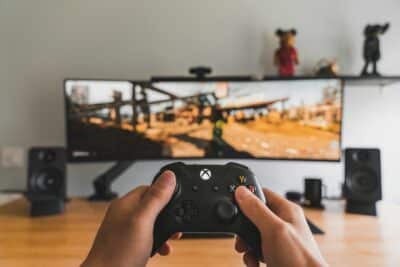Red flags almost always precede school shootings. We know that; we’ve documented it. And we’ve done next to nothing about it.
How many more red flags are we going to ignore before we finally build a bigger, stronger safety net?

According to a Washington Post article, the 18-year-old male who killed 19 children and 2 teachers (and wounded more than a dozen more) at an elementary school in Uvalde, Texas,
- Had history of self-harm
- Was bullied
- Got into multiple fist fights in middle school
- Missed a lot of school
- Shot random people with a BB gun
- Dropped out of school
- Had a chaotic family life, including a mother who may struggle with drug addiction
- History of frequent police engagement due to domestic problems
- Change in physical appearance
- Posting images of automatic rifles
- Purchase of 2 semi-automatic rifles and hundreds of rounds of ammo over a 3-day period, shortly after turning 18
- Social media threats
HOW MANY MORE RED FLAGS ARE WE GOING TO IGNORE???
Any of one these….fine. People go through tough stuff. Lots of kids are bullied. Lots of kids experiment with self-harm. Far too many kids live in chaotic households with family members who are addicted to drugs or alcohol. But each of those kids deserves help, support, and care. NONE of our children should be so adrift that their struggles and risk factors stack up to this extent. And when these risk factors co-exist, the individual in question should not be able to buy a gun.
We failed dozens of people yesterday. We failed the shooter as well. The Washington Post article ends with a heartbreaking quote from a peer of the shooter:
“I think he needed mental help. And more closure with his family. And love.”
He did need mental help. He needed emotional and logistical support, and he needed love.
All of our kids need those things and it is high time — past time! — that we collectively create a safety net that’s big enough and strong enough to support all children and families. Doing so is crucial if we want to prevent additional school shootings.
The Link Between Kids’ Well-Being and Public Safety
In 2018, a day after the massacre at Marjory Stoneman Douglas High School in Parkland, Florida, I wrote:
Kids who are happy, content, safe and well-cared for do not shoot up schools. The fact that so many are resorting to horrific violence tells me we are failing our kids in so many ways. Our social net is frayed to tatters, and children are falling through — and taking others with them.
I stand by those words. I wish we cared enough about kids that we’d see and respond to their needs — and assure their needs are met — simply because that’s the right and decent thing to do. But we don’t. The United States lags behind so many other countries when it comes to investment in children and families.
Maybe, perhaps, our collective fear will finally drive us to action. Maybe this latest school shooting will be the one that helps us finally realize that hurt people, hurt people. Maybe we will create interconnected systems to recognize and reach people who display red flags if only because we are scared for our own safety (and the safety of our children).
Following Up on Red Flags
In the days to come, I expect we’ll learn more about the shooter’s history. It’s already clear that he (and his family) had previously connected with the police force. His school certainly noticed and recorded his absences, as well as his early exit from school. Each of those things are known risk factors, and yet, whose responsibility is it to follow up with a strange, shy kid? The school’s responsibility officially ends when he leave school.
There’s currently very little to no coordinated interaction between schools, families, health services and law enforcement. Yet that kind of interconnection is exactly (part of ) what’s need to stave off future school shootings.
We need school working with law enforcement working with mental health services working with healthcare professionals. We need gun laws and regulations that interface with all of that because as much as I support Americans’ right to bear arms, I don’t think that right should come without responsibilities. And I don’t think that right should be exercised by someone who is exhibiting several red flags indicating a potential for violent behavior.
Of course, we need more mental health professionals to adequately follow up on red flags. We need policies that increase access to (and affordability) of physical and mental health care. We need policies and practices that allow educators to do their jobs. We need easily available addiction treatment, we need widespread education regarding domestic violence, we need policies that allow family members to spend meaningful time caring for their young (and old).
Building Safety Nets to Avert School Shootings
The sad truth is that it will take time to turn things around. There is a serious, acute shortage of mental health providers. (According to a recent JAMA Network article, 45% of the U.S. population lives in an area with a shortage of mental health professionals, and the shortage of mental health clinicians is driven, in part, by “too few spots in the graduate medical education (GME) system for psychiatrists…the number of residency slots has not grown with the population or with the nation’s changing mental health needs.”) Healthcare providers and educators are leaving those fields in droves due to chronic stress (and lack of support) that was exacerbated by the public response to the COVID-19 pandemic. Parents and families also are stressed.
As a nation, we have invested very few resources into the things we know are good for child development. As stated by Dr. Dana Suskind and science journalist Lydia Denworth in their new book, Parent Nation: Unlocking Every Child’s Potential, Fulfilling Society’s Promise, “society has abdicated its responsibility for all families.” The United States:
- Spends less on early childhood care and education than any other developed nation
- Is one of only 38 countries within the Organisation for Economic Co-operation and Development (OCED) to not mandate paid parental leave
- Has a woefully inadequate childcare system, with approximately 1/2 of American living in so-called childcare deserts and fewer than 10% of existing programs rated as “high quality”
Approximately 1 in 7 children in the United States lives in poverty. For Black and brown children, that number is more than 1 in 4.
We reap what we sow.
We cannot realistically expect to have a healthy, safe society if we do not invest in the wellness and well-being of each of her citizens.
Let’s stop ignoring the red flags, and start weaving a safety net.






